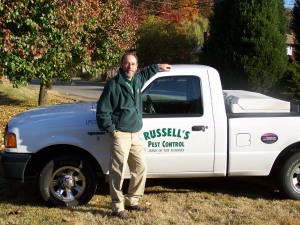 Last time, in Termite Protection 101, we discussed two well-known, reliable options for termite treatments. Today, however, I want to present something that is exciting in the pest control industry because it’s ground-breaking and new. If you read the last post, you may have noticed that I mentioned a “regular Sentricon System.” Now, it’s time to tell you about the newest type of Sentricon protection called Always Active® from Dow AgroSciences. Let’s go over the differences between a regular system and an Always Active System.
Last time, in Termite Protection 101, we discussed two well-known, reliable options for termite treatments. Today, however, I want to present something that is exciting in the pest control industry because it’s ground-breaking and new. If you read the last post, you may have noticed that I mentioned a “regular Sentricon System.” Now, it’s time to tell you about the newest type of Sentricon protection called Always Active® from Dow AgroSciences. Let’s go over the differences between a regular system and an Always Active System.
- In a regular Sentricon System, the stations are pre-baited with wood to intercept the termites before they reach the house. The Always Active System gets its name because it is baited with the product that eliminates the termite colonies all the time. This is possible because Dow AgroSciences has developed denser, more long-lasting bait that can endure long periods underground with no problem.
- Perhaps you were wondering how long it can be underground? The answer is at least a full year. A traditional Sentricon System is monitored every three months, but an Always Active System requires just one yearly visit. Our technician monitors the stations and inspects the house all in one annual appointment.
If you’re also wondering which features are the same, I can tell you those, too.
- The Always Active System is still made by the same people who won the Green Chemistry Award with the first Sentricon System. All Sentricon Systems are well-respected because they eliminate the need for hundreds of gallons of products to be put around the home. Bait is only removed from the locked stations when termites eat it or take it to the colony. Always Active works with the same strategy in mind. The bait is designed to affect the termite growth cycle and not to affect other living things around it.
- Something else that remains the same is the warranty. Both Sentricon Systems come with a damage repair warranty, meaning the repairs are on us if the termites get past our defenses.
- The cost of the Always Active System remains very comparable to the standard system. It may cost slightly more to install because more product is used up front, but the annual renewal fees run in the same price range of $280-$380.
Is the Always Active Sentricon System for everyone? No, it’s not necessarily. Some people like to have that quarterly check-up to hear from their technician that everything is all right. The traditional Sentricon System is a fabulous product and is not in any way outdated or declining. But, there are some people who could really benefit from a yearly service. If you have dogs that need to be put up any time a technician is around, Always Active could be for you. That would save you four days every year of rearranging your schedule to get the dogs put away. People who live in gated areas often appreciate the convenience of a single service so they don’t have to leave their property open multiple times a year. Rental property owners might feel the same way. There are any number of small, personalized scheduling issues that could make this system the right choice, and the presence of bait 365 days a year makes the upgraded system a popular change, even if scheduling isn’t a problem.
We have discovered that people have a lot of questions about this new treatment option, and we are happy to discuss those at whatever length is needed. Please leave me a comment or contact us at 865.584.8549 if you want the scoop on Always Active. You can also set up an inspection on our websiteif you’d like to hear more about coverage options.


